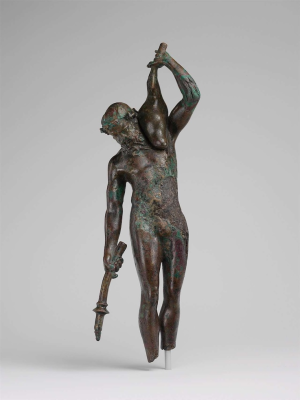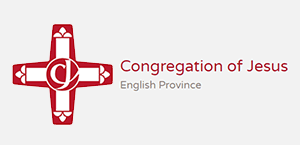Gospel in Art: No one puts new wine into old wineskins

Ancient Greek bronze satyr with a wineskin 3rd-2nd century BC ©Metropolitan Museum of Art, NY
Source: Christian Art
Gospel of 20 January 2025
Mark 2:18-22
At that time: John's disciples and the Pharisees were fasting. And people came and said to Jesus, 'Why do John's disciples and the disciples of the Pharisees fast, but your disciples do not fast?' And Jesus said to them, 'Can the wedding guests fast while the bridegroom is with them? As long as they have the bridegroom with them, they cannot fast. The days will come when the bridegroom is taken away from them, and then they will fast in that day. No one sews a piece of unshrunken cloth on an old garment. If he does, the patch tears away from it, the new from the old, and a worse tear is made. And no one puts new wine into old wineskins. If he does, the wine will burst the skins - and the wine is destroyed, and so are the skins. But new wine is for fresh wineskins.'
Reflection on the Ancient Greek Statuette
A wineskin is an ancient receptacle for wine, crafted from stitched animal leather to form a vessel for storage or transport. Large wine bottles simply didn't exist. Wine was sometimes put into earthenware vessels, but these were fragile and highly breakable. In antiquity, wineskins were essential for carrying wine during travel. Our Ancient Greek bronze statuette portrays a satyr carrying a wineskin on his shoulder, with a torch in his other hand.
In today's Gospel reading, the disciples of John the Baptist express frustration that Jesus' disciples do not fast. Fasting, alongside prayer and almsgiving, was a key religious duty. Jesus explains that there is a time for fasting and a time for feasting. He likens the joy of discipleship to the celebration of a wedding feast, where the presence of the bridegroom fills the guests with joy. Yet, discipleship also entails times of carrying our crosses in humility. To follow Christ is to embrace both the joy of his presence and the discipline of seeking him with a humble and fasting heart. Our Christian life is recognising the rhythm of celebration and of sacrifice.
Jesus deepens this teaching with the image of wineskins. In his time, wine was stored in wineskins, and new wine, still fermenting, exerted pressure that required elastic, new skins to prevent bursting. Old skins, hardened over time, could not withstand the pressure. But Jesus' lesson is not a call to reject the old for the new. Instead, he invites us to find balance. Just as both the Old and New Testaments enrich our understanding of God's word, we are called to honour the past while remaining open to new movements of the Holy Spirit. Jesus desires our hearts and minds to be like new wineskins-flexible, receptive, and open to growth, always expanding; while also valuing the wisdom and traditions of the past.
LINKS
Gospel in Art: https://christian.art/
Today's Reflection: https://christian.art/daily-gospel-reading/mark-2-18-22-2025/


















